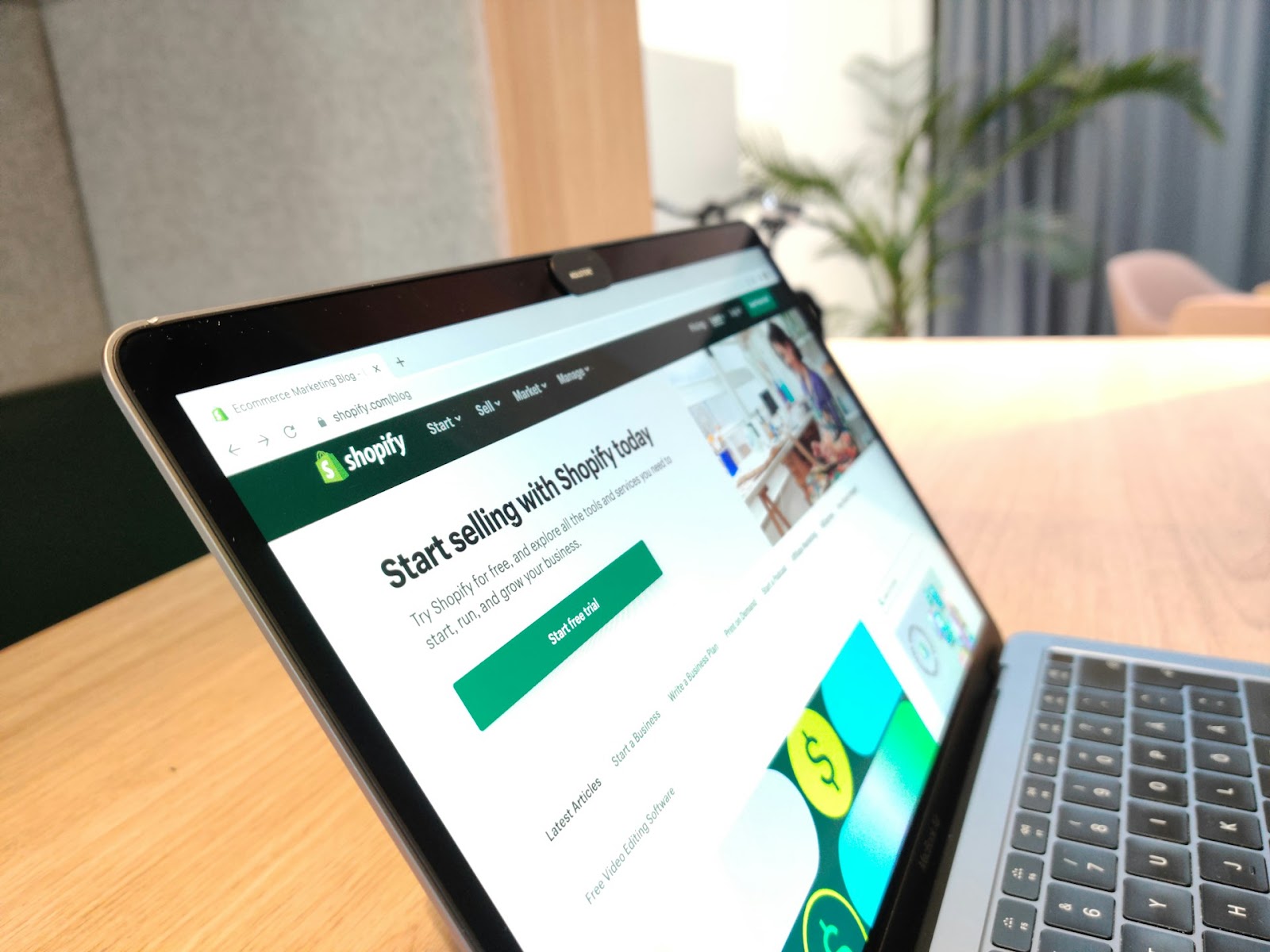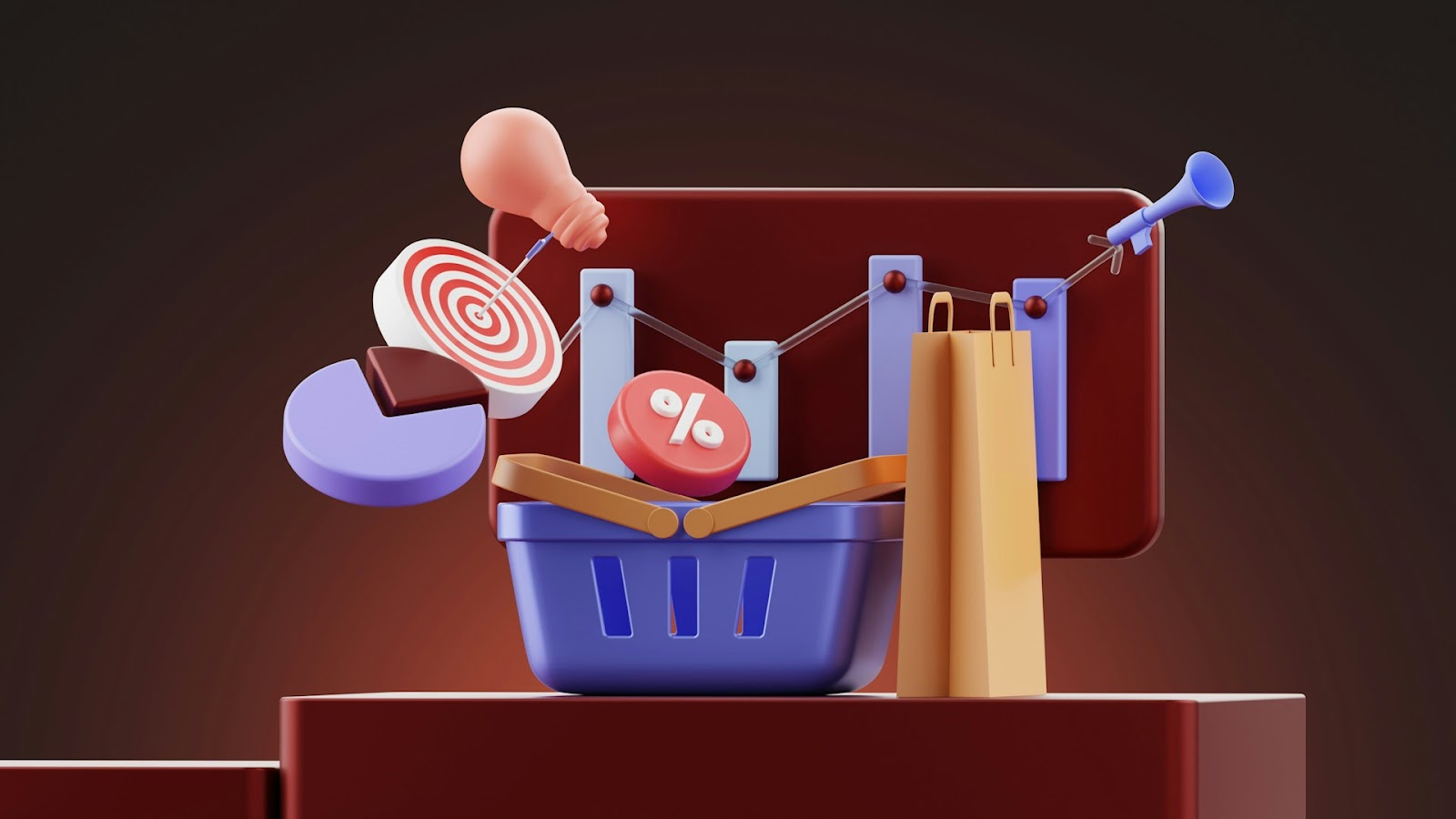Not sure what running your Shopify store will truly cost over time? Our Shopify Store Total Cost of Ownership Calculator takes the mystery out of the numbers, giving you a clear, instant view of your real setup, operational, and long-term expenses.
Whether you’re planning your first store, budgeting for upgrades, or assessing profitability before scaling, this tool breaks down every cost, from platform fees and apps to marketing and maintenance, quickly and accurately.
Use it now to plan smarter, avoid hidden surprises, and get the financial clarity you need to grow your store with confidence.
Breaking Down Each Element of the Shopify Store Total Cost of Ownership Calculator + Strategic Business Applications
Here's a detailed analysis of every component in the Shopify Store Total Cost of Ownership Calculator, complete with real-world examples and strategic scenarios to help you optimize your eCommerce investment and operational planning.
1. Shopify Plan Selection

This dropdown determines your core platform investment, directly impacting feature access and transaction costs across your entire operation.
Examples:
- Growing Startup: Basic Plan ($25/month) - Essential features for new brands testing market fit
- Scaling Business: Grow Plan ($65/month) - Advanced reporting and team collaboration for expanding operations
- Enterprise Brand: Advanced Plan ($399/month) - International selling and advanced analytics for complex operations
- High-Volume Merchant: Shopify Plus ($2,300/month) - Enterprise-grade scalability and customization capabilities
Why It Matters: Plan selection affects transaction fees, feature limitations, and scalability potential, forming the foundation of your entire TCO calculation.
2. Custom Plan Cost Input
Advanced override option for businesses with negotiated enterprise pricing or specialized platform arrangements.
Examples:
- Fortune 500 Retailer: $4,500/month (custom Plus pricing with additional features)
- Multi-Brand Conglomerate: $8,200/month (enterprise package covering multiple storefronts)
- Agency Client: $1,250/month (negotiated Advanced features at custom pricing)
Why It Matters: Provides precision for complex enterprise scenarios where standard pricing doesn't reflect actual platform investment.
3. Theme Cost Investment
One-time expense for your store's design foundation, impacting brand presentation and conversion optimization.
Examples:
- Bootstrap Startup: $0 (free theme with basic customization)
- Fashion Brand: $380 (premium theme from Shopify Theme Store)
- Luxury Retailer: $25,000 (fully custom theme with advanced features)
- B2B Manufacturer: $12,500 (specialized theme for wholesale functionality)
Why It Matters: Theme investment directly influences conversion rates, user experience, and long-term design maintenance costs.
4. Theme Amortization Period
Strategic cost distribution for theme investment, enabling accurate monthly TCO calculations and budget planning.
Examples:
- Fast-Moving Fashion: 6 months (frequent redesigns for seasonal campaigns)
- Standard Retail: 12 months (balanced approach for most businesses)
- Enterprise Brand: 24 months (long-term investment in custom development)
- Conservative Approach: 36 months (maximum cost spreading for cash flow optimization)
Why It Matters: Proper amortization ensures realistic monthly cost calculations and supports strategic budgeting decisions.
5. Shopify App Subscriptions
Dynamic input system for essential third-party functionality, representing ongoing operational requirements and feature expansion.
Examples:
- Email Marketing: Klaviyo ($60/month) - Advanced segmentation and automation
- Reviews Management: Yotpo ($79/month) - User-generated content and social proof
- Inventory Management: TradeGecko ($149/month) - Multi-channel inventory optimization
- Subscription Commerce: ReCharge ($99/month) - Recurring revenue management
Why It Matters: Apps often represent 15-30% of total platform costs and directly impact functionality, requiring careful ROI evaluation.
6. Custom Development Investment
One-time investment in proprietary features, integrations, and specialized functionality beyond standard Shopify capabilities.
Examples:
- B2B Portal: $45,000 (custom wholesale ordering system with tiered pricing)
- Mobile App: $75,000 (native iOS/Android app with Shopify integration)
- ERP Integration: $28,000 (custom connector for legacy business systems)
- Advanced Analytics: $15,000 (custom reporting dashboard for complex KPIs)
Why It Matters: Custom development creates competitive advantages but requires strategic amortization for accurate TCO assessment.
7. Development Amortization Timeline
Strategic cost distribution for custom development investment, balancing immediate impact with long-term value creation.
Examples:
- Competitive Feature: 6 months (rapid payback expectation for market advantage)
- Core Functionality: 12 months (standard timeline for essential business features)
- Platform Integration: 18 months (complex systems requiring longer payback periods)
- Future-Proofing: 24 months (strategic investment in long-term competitive positioning)
Why It Matters: Appropriate amortization aligns development costs with business value creation and cash flow management.
8. Monthly Maintenance & Support
Ongoing investment in platform optimization, security, and performance monitoring for sustained operations.
Examples:
- Basic Monitoring: $200/month (essential updates and security patches)
- Performance Optimization: $850/month (speed optimization and conversion improvements)
- Full-Service Management: $2,500/month (comprehensive platform management and optimization)
- Enterprise Support: $5,000/month (dedicated team for complex, high-volume operations)
Why It Matters: Consistent maintenance prevents costly emergencies and ensures optimal performance for revenue generation.
9. Average Order Value (AOV)

The foundation metric determines revenue calculations and influences all percentage-based cost structures throughout the analysis.
Examples:
- Accessories Brand: $35 (impulse purchases and gift items)
- Fashion Retailer: $85 (apparel with moderate price points)
- Home Goods: $165 (furniture and decoration items)
- Luxury Jewelry: $750 (high-value, considered purchases)
Why It Matters: AOV directly impacts payment processing costs and determines the viability of various operational expense levels.
10. Orders Per Month Volume
Critical volume metric affecting fulfillment costs, payment processing, and operational scalability requirements.
Examples:
- Emerging Brand: 150 orders (testing market fit and scaling operations)
- Growing Business: 750 orders (established operations with growth trajectory)
- Established Retailer: 3,200 orders (mature operations requiring advanced systems)
- High-Volume Merchant: 12,500 orders (enterprise-scale requiring specialized solutions)
Why It Matters: Order volume determines fulfillment costs, payment processing fees, and operational complexity requirements.
11. Payment Processing Fees
Variable cost structure, including percentage rates and per-transaction fees, significantly impacts profitability at scale.
Examples:
- Shopify Payments: 2.9% + $0.30 (standard rate for most businesses)
- High-Risk Industry: 3.8% + $0.45 (specialized processing for restricted verticals)
- Volume Discount: 2.4% + $0.25 (negotiated rates for high-volume merchants)
- International: 3.4% + $0.35 (cross-border transaction premium)
Why It Matters: Payment processing often represents 2-4% of total revenue, making rate optimization crucial for profitability.
12. Fulfillment Cost Per Order
Direct operational expense for order processing, packaging, and preparation before shipping.
Examples:
- Dropshipping: $0 (supplier handles fulfillment)
- Self-Fulfillment: $2.50 (in-house picking, packing, and processing)
- Third-Party Logistics: $4.75 (professional fulfillment center services)
- Complex Products: $8.50 (custom packaging or assembly requirements)
Why It Matters: Fulfillment costs directly impact margins and scale with volume, requiring optimization for profitable growth.
13. Shipping Cost Per Order
Customer delivery expense, often subsidized by merchants to improve conversion rates and customer satisfaction.
Examples:
- Customer Pays: $0 (shipping costs passed through to customers)
- Partial Subsidy: $3.50 (merchant covers portion of shipping costs)
- Free Shipping: $7.25 (full shipping cost absorption for competitive advantage)
- Premium Delivery: $12.80 (expedited shipping for customer satisfaction)
Why It Matters: Shipping strategy directly impacts conversion rates and customer acquisition, requiring a balance between costs and competitiveness.
14. Monthly Marketing Spend
Investment in customer acquisition, retention, and brand building across digital and traditional channels.
Examples:
- Organic Focus: $500/month (content creation and SEO optimization)
- Balanced Approach: $2,500/month (mix of paid advertising and organic strategies)
- Growth Phase: $8,500/month (aggressive customer acquisition during scaling)
- Mature Brand: $15,000/month (comprehensive omnichannel marketing strategy)
Why It Matters: Marketing spend determines customer acquisition costs and growth trajectory, requiring ROI optimization for sustainable scaling.
15. Other Monthly Costs
Miscellaneous operational expenses, including software tools, professional services, and administrative requirements.
Examples:
- Photography: $800/month (product imagery and content creation)
- Accounting Services: $450/month (bookkeeping and financial management)
- Customer Service: $2,200/month (dedicated support team and tools)
- Legal & Compliance: $1,500/month (ongoing regulatory and intellectual property protection)
Why It Matters: Comprehensive cost tracking ensures accurate TCO calculations and identifies optimization opportunities.
16. Monthly Gross Revenue Display
Real-time calculation showing total revenue potential based on AOV and order volume inputs.
Performance Indicators:
- Startup Validation: $15,000/month (proving product-market fit)
- Growth Trajectory: $65,000/month (scaling operations and market expansion)
- Established Business: $280,000/month (mature operations with optimization focus)
- Enterprise Scale: $950,000/month (advanced operations requiring specialized management)
Why It Matters: Revenue context enables percentage-based cost evaluation and profitability assessment for strategic planning.
17. Total Cost of Ownership Calculation
Comprehensive monthly cost aggregation providing complete operational expense visibility for strategic decision-making.
TCO Categories:
- Platform Foundation: Shopify plan and theme costs
- Functionality Expansion: Apps and custom development
- Transaction Processing: Payment and processing fees
- Order Fulfillment: Picking, packing, and shipping costs
- Growth Investment: Marketing and operational expenses
Why It Matters: Complete TCO visibility enables accurate profitability analysis and strategic investment optimization.
18. Net Profit & Margin Analysis
Bottom-line profitability calculation with performance indicators for business health assessment and strategic planning.
Profitability Scenarios:
- ✅ Healthy Margins (25%+): Sustainable operations with growth potential
- ⚠️ Moderate Margins (10-25%): Functional but requiring optimization focus
- 🚨 Thin Margins (0-10%): Immediate attention required for sustainability
- 📉 Operating Loss (Negative): Strategic pivot or cost reduction necessary
Why It Matters: Profit analysis drives strategic decisions about pricing, cost optimization, and growth investment priorities.
Complete Analysis Example
Scenario: Premium Home Goods Brand
Input Configuration:
- Shopify Plan: Grow ($65/month)
- Theme Investment: $8,500 amortized over 18 months
- Apps: Klaviyo ($85), Yotpo ($99), Gorgias ($160)
- Custom Development: $25,000 amortized over 12 months
- AOV: $145
- Monthly Orders: 850
- Marketing Spend: $12,500/month
Results Analysis:
- Monthly Revenue: $123,250
- Total TCO: $28,430
- Net Profit: $94,820
- Profit Margin: 77%
Strategic Insights: Exceptional profitability indicates potential for increased marketing investment or premium positioning expansion. Strong margins support aggressive growth strategies and competitive positioning.
Optimization Recommendations:
- Increase marketing spend to accelerate customer acquisition
- Invest in a premium fulfillment experience for brand differentiation
- Explore international expansion with the current margin buffer
- Consider the subscription model introduction for recurring revenue
Mastering these calculator components empowers eCommerce leaders to make data-driven decisions about platform investments, operational optimization, and strategic growth planning while maintaining comprehensive visibility into true ownership costs.
Cut Your Shopify Costs Strategically: 8 High-Impact TCO Reduction Methods

Running a profitable Shopify store means optimizing every dollar you spend on platform operations. These proven strategies focus on the highest-impact areas where most store owners can achieve immediate and sustainable cost reductions.
App Consolidation Strategies
Most store owners pay for overlapping functionality across multiple apps. A focused app audit typically reveals 3-5 redundant subscriptions that can be eliminated without losing essential features.
Quick wins for immediate savings:
- Audit your app stack monthly - Identify redundant features across tools
- Choose multi-functional apps over single-purpose solutions
- Negotiate annual discounts - Most providers offer 15-25% savings yearly
- Remove unused apps immediately - Even "paused" subscriptions often continue billing
Pro Tip: Use Shopify's app usage analytics to identify apps you haven't accessed in 30+ days, prime candidates for removal.
Theme Optimization for Performance
A slow-loading theme directly impacts conversion rates and increases infrastructure costs. Performance optimization typically improves site speed by 2-4 seconds while reducing bounce rates.
Performance optimization checklist:
- Compress all images to the WebP format
- Remove unused theme code and outdated features
- Minimize app integrations to reduce loading conflicts
- Use lazy loading for below-the-fold images
Mobile optimization is crucial since slower mobile sites see higher abandonment rates, directly affecting your revenue-to-cost ratio.
Payment Processing Fee Negotiations
Payment processing fees represent 2-4% of total revenue, making this a high-impact optimization area. Even small rate improvements create compounding savings as your business grows.
Negotiation strategies:
- Leverage volume for better rates - $50K+ monthly qualifies for custom pricing
- Compare total costs, including all fees, not just headline rates
- Negotiate based on low chargeback rates
- Review rates quarterly as your negotiating position improves
Important: Always calculate the total effective rate, including monthly fees and per-transaction costs.
Fulfillment Cost Reduction
Smart fulfillment strategies typically reduce per-order costs while improving delivery times through better processes and partnerships.
Cost-cutting approaches:
- Use Shopify's shipping discounts - Access pre-negotiated carrier rates
- Optimize packaging size - Dimensional weight pricing affects costs significantly
- Batch similar orders to reduce handling time
- Consider 3PL partnerships for 1,000+ monthly orders
Regional fulfillment centers can reduce shipping distances and associated costs for growing businesses.
Marketing Efficiency Improvements
Marketing represents the largest variable cost for growing stores. Optimizing efficiency reduces customer acquisition costs while maintaining quality.
High-ROI optimizations:
- Focus on retention first - Email marketing delivers higher ROI than paid acquisition
- Implement proper attribution tracking to identify profitable channels
- A/B test creative consistently to maintain performance
- Optimize for lifetime value rather than just initial purchase
Develop a customer lifetime value model to determine appropriate acquisition costs per channel.
Technology Stack Optimization
Strategic tech decisions reduce monthly expenses while improving functionality and reducing manual work requirements.
Smart technology decisions:
- Use Shopify's native features before third-party solutions
- Choose tools with transparent pricing to avoid unpredictable scaling costs
- Consolidate overlapping functionality across multiple tools
- Prioritize robust API integrations to reduce development costs
Review all software subscriptions quarterly to identify consolidation opportunities.
Inventory Management Excellence
Poor inventory management creates hidden costs through storage fees, markdowns, and tied-up capital. Optimized practices improve cash flow while reducing carrying costs.
Cost reduction tactics:
- Use ABC analysis to focus on high-impact products
- Implement demand forecasting using historical data
- Negotiate extended payment terms to improve cash flow
- Optimize reorder points to balance carrying costs with stockout risk
Cash Flow Impact: Optimizing inventory levels frees up working capital for growth investments or reduces financing costs.
Strategic Cost Planning
Long-term thinking prevents expensive, rushed decisions and creates opportunities for better vendor relationships and pricing.
Strategic approaches:
- Create annual budgets by category for planned negotiations
- Build vendor relationships for better long-term pricing
- Plan for seasonal spikes to avoid emergency premium pricing
- Document optimization efforts to build institutional knowledge
Implementation: Start with immediate wins like app audits in month one, tackle operational optimizations in months 2-3, then strategic initiatives in months 4-6.
Successful store owners treat cost optimization as continuous improvement rather than a one-time project. Regular attention to these areas creates compounding benefits that support sustainable, profitable growth.
Use TCO Insights To Build a More Profitable Store
Understanding your Shopify store’s true cost of ownership isn’t optional; it’s the difference between scaling profitably and bleeding margin. With this calculator, you’ve broken down setup, apps, fees, fulfillment, and more to see exactly where your money’s going and where you can save.
Now it’s time to act on that clarity. Whether you’re launching or optimizing, don’t build blindly. Partner with Velt2 to turn your TCO insights into leaner operations, higher margins, and smarter growth.







.jpg)

.jpg)

%20(1).jpg)
